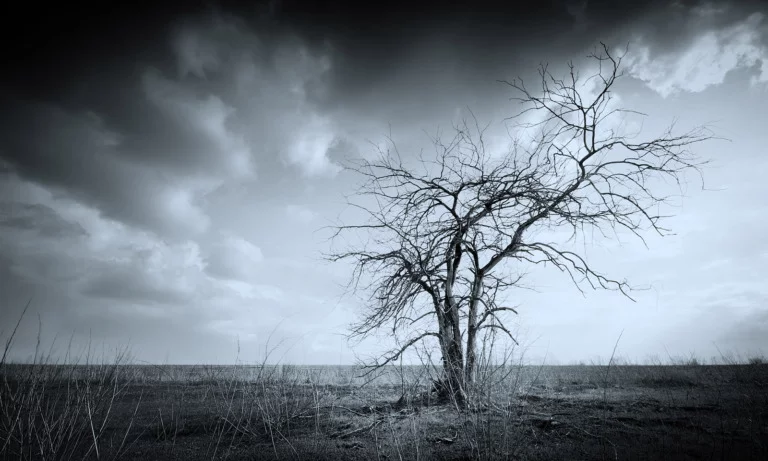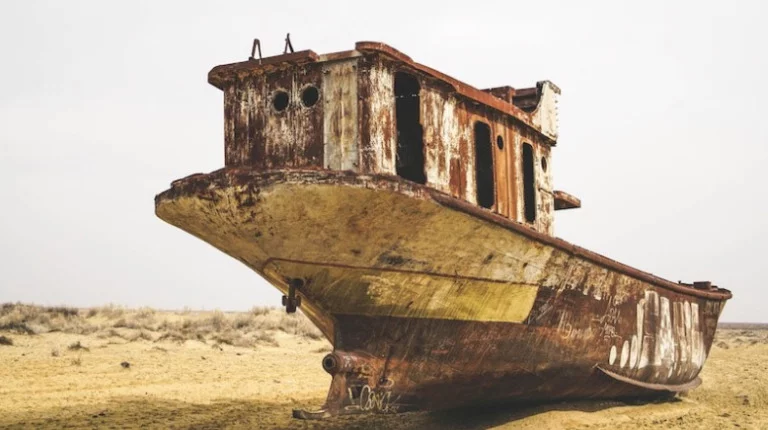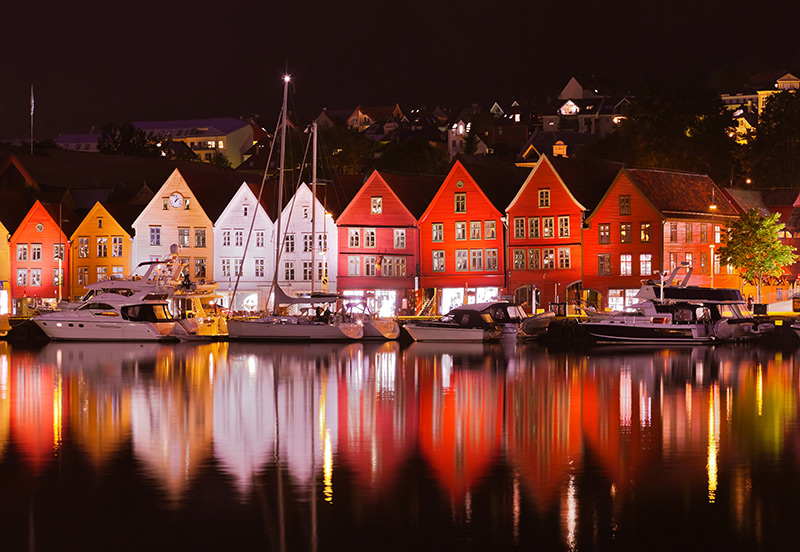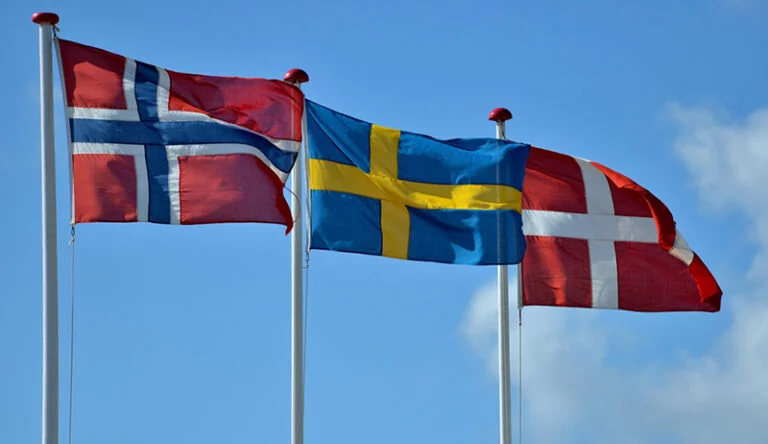
The story of how Europe’s deadliest plague pandemic influenced Norway for centuries.
2020 and perhaps 2021 will forever be known as the years of the coronavirus. But it won’t be the last and certainly wasn’t the first health crisis to hit humanity.
There was the HIV/AIDS crisis of the 1980s. Despite medical advances and improved knowledge, there are an estimated 38 million people around the world living with the infection today.
Before that, the so-called Spanish flu infected an estimated one-third of the world’s population, killing millions, from 1918 to 1920. But humanity’s greatest struggle began its life many hundreds of years earlier.
The Black Death: the worst of them all
Pestilence has been a known part of the human experience for all of recorded history. It’s likely been that way, in fact, since the very dawn of mankind. Every so often a new disease, or strain, comes along and wipes out half of the population.
As modern medicine has advanced, so we’ve become much better at dealing with epidemics and pandemics in many ways. But as recent events have shown us, there’s a very fine line between success and failure, even today.
Of all the highly contagious diseases humans have had to fight, Bubonic Plague has been one of the longest lived. With outbreaks dating back to 541 CE, and the disease still rising somewhere in the world most summers, it’s one of humanity’s deadliest foes.
Let’s take a look at the story of the Black Death in Norway's history.
A brief history of Bubonic Plague
If you’re wondering, with good reason, how long a pandemic can last then don’t turn to the plague for a reassuring answer. So far humanity has dealt with three major plague pandemics. Each of those covered between one hundred and five hundred years!

Starting with the Plague of Justinian (541-549) the First Plague Pandemic consisted of at least 15 waves, lasting for 226 years overall, stretching all the way to 767. The Third Plague Pandemic, by contrast, started in 1855 in Yunnan, China and lasted ‘only’ until 1960. Mostly confined to Asia, it was India and China that bore the brunt.
But it’s the Second Plague Pandemic that we’re mostly concerned with here. This was the one you most likely learned about in school. It raged through Europe and Asia in some form for over 500 years.
Opinion is slightly divided as to exactly where it started but we know that it spread throughout Europe from Crimea starting in 1347 and raged for an initial 6 years. Overall, this single outbreak alone killed an estimate of somewhere between 75 and 200 million people.
For that very reason, it is known simply as The Black Death.
Transmission of the Black Death in Norway
It was only recently that we worked out how plague was transmitted. From early theories about infected air, we worked out rats were involved before finally realising it was fleas biting infected rats then biting humans.
We’ve mentioned before how global trade routes have been one of the most important things underpinning human progress. From the development of money and economies to the domestication of fluffy cats, human societies have developed how they have in large part thanks to trade and trade routes.

These trade routes have also been very useful in the development of diseases too. As people travel around, they take their diseases with them and spread them, knowingly or unknowingly, to the people they trade with.
Another ever-present feature of human history is war. War also has its own ways of contributing to the spread of disease. One theory behind the spread from Mongolia to Crimea is that the Golden Horde army were laying siege to the Genoese port city of Kaffa.
Read more: The Norway Rat
It’s said that the raiders, many of whom were suffering with plague, would catapult the bodies of the dead over the city walls. In this way, bubonic plague acted as a kind of early biological warfare!
From Crimea to Norway
From Kaffa in Crimea, the Genoese sailors spread the plague to Constantinople and the Byzantine empire. Onwards, it soon reached Sicily before the end of 1347. In January of 1348, Genoese galleys reached Northern Italy and Marseilles in Southern France.
Having covered most of the Mediterranean, the plague rapidly spread North and West to cover the entire continent. By the summer of 1348 it had reached Portugal in the West, England in the North and Germany in the East.
1349 saw plague spreading South from Spain into Morocco and North Africa, and from Turkey down through Eastern Asia. The same year also saw the plague finally end up on the shores of Norway, thanks at least in part to the British!

Some tales tell of a ship where the entire crew died of plague and the ghost ship happened to wreck at Bergen. Whilst this is a great story there’s no evidence that it happened and the chances of an unmanned ship happening to find Bergen are pretty close to zero!
The accepted version is that a ‘plague ship’ arrived in Bergen in the late summer of 1349, probably August. The crew seemed healthy so were allowed in but soon after unloading, they started dying. Then, a few days later, the people of Bergen started dying.
What’s less known is that plague arrived in Oslo via a different route and likely earlier – May or June of 1349. This is only indirectly documented because, at the time, Oslo was of little importance in the global trade networks and so, for the purposes of most records, may as well not have existed!
The rapid spread through Norway
Once it arrived in Norway, the plague tore through the country. Estimates are between one third and two thirds of the population being killed. While exact numbers of deaths aren’t known, the country didn’t fully recover to its pre-pandemic population level until the 17th century.
In the year 1300, around 36,500 farms and 60,000 households were known in Norway. In 1520, there were 16,000 farms and 23,000 households. Population estimates place the numbers at less than half the 1300 level.

To put into perspective how important Bergen was and how unimportant Oslo was, the plague reached Nidaros (Trondheim) from Bergen by the autumn. The North-South routes had always been popular because of fishing and seafood production in places like Lofoten.
Stavanger, meanwhile, was infected from Oslo. The city is significantly closer to Oslo than Trondheim is to Bergen. But the first plague deaths weren’t recorded there until 1350, despite the fact that the plague reached Oslo earlier than Bergen.
As to Northern Norway, once you get North of Nidaros, records again get very patchy. One piece of evidence we have is that a church was built in Trondenes in the North of Norway in the late 14th or early 15th century when, in the rest of Norway, churches were often lying abandoned because there were too few people left to attend church in many areas.
Decline of Norwegian influence
Scandinavian politics of the Middle Ages was very convoluted! Norway, Sweden and Denmark existed in a state of some kind of union with each other for a lot of the time. For the early part of the 14th century, from 1319 to 1343, Norway was in a personal union with Sweden.
This officially ended when King Magnus (IV of Sweden, VII of Norway) allowed his son Haakon to succeed him on the Norwegian throne. But as Haakon was only 3 years old, clearly Magnus was still in charge!

So, when the Black Death came along, Norway had a 9-year-old King and was effectively ruled from Sweden through the Norwegian nobility and elite classes. It was technically an independent nation but didn’t truly become so until 1355 when Haakon was old enough to assume power.
Losing half of your population isn’t generally considered a good thing, though Haakon managed to rule the country until his death in 1380. But with a weakened population Norway was massively diminished.
Decline and the Kalmar Union
In 1387, the three Scandinavian nations entered the Kalmar Union as equals. Over time, however, Norway’s influence continued to decline until it was, effectively, simply a province of Denmark.
Most attribute this to the Black Death but if we look at both Britain and Sweden, they suffered similar levels of loss without losing their influence. So why was Norway so badly affected?
It seems that, unlike other countries, Norway’s elite classes were badly hit. In a political union your relative strength comes from the people who are in charge. The Swedish nobility didn’t suffer such bad losses and, as the seat of the throne, Denmark was also able to assert its dominance.

Norway lost all but one of its bishops while Sweden lost none. The nobility was so weak it couldn’t support Norway politically. Officials also suffered heavy losses, so they were replaced by administrators from Germany and Denmark.
Denmark consolidated all military power and the Hanseatic League assumed control of Norwegian trade through Bergen.
This loss of Norwegian power and influence effectively continued into the early 20th Century. In 1905, Norway finally reclaimed its place in the world as a sovereign nation after more than 500 years of various unions with Denmark and Sweden.
So. was the plague all that bad?
The short answer is yes. Bubonic plague may not seem all that bad these days because, after all, nobody dies of it anymore, do they? Sadly, yes they do.
Yersinia pestis, the Bubonic plague bacterium, spreads in a somewhat bizarre way. It seems to use a combination of immune and susceptible rat species to keep itself alive, often for hundreds of years, before popping back up again in humans.

